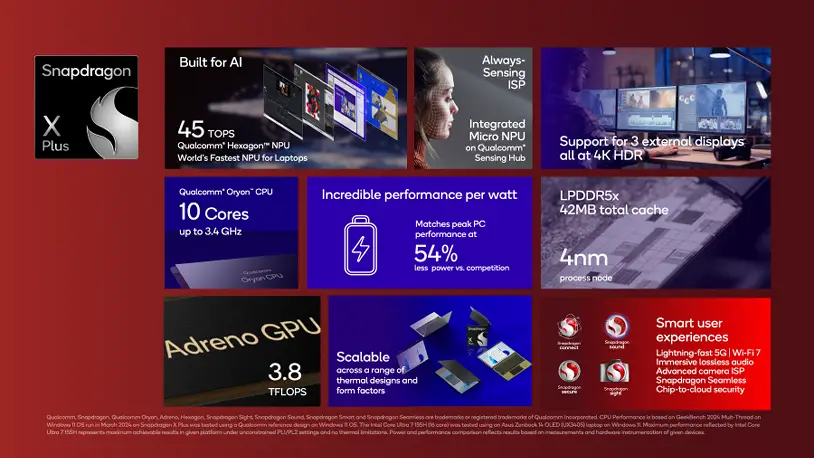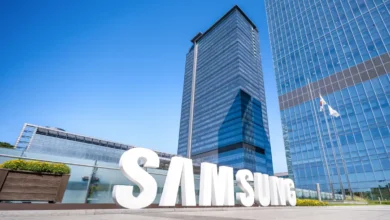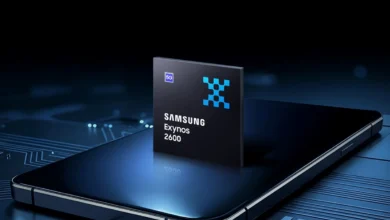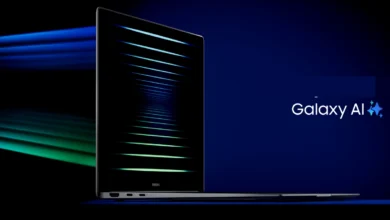Samsung Laptops Might Embrace Qualcomm’s New Snapdragon X Chip

Finally, Qualcomm has debuted its new ARM-based processor, the Snapdragon X Plus, designed for laptops. We anticipate Samsung to incorporate this chipset into its upcoming laptops.
However, this new chipset appears a bit below the company’s high-end laptop chipset, the Snapdragon X Elite, which was unveiled a few months ago and is expected to be used in Samsung’s forthcoming Galaxy Book 4 Edge.
The Snapdragon X Plus is a 4nm chip with a 10-core CPU. The Snapdragon X Elite and this newly launched chipset use the same Oryon CPU cores. This chipset is expected to be used in more affordable laptops running on the Windows OS. The CPU of this chipset operates at 3.4GHz, while the Snapdragon X Elite clocks at 3.8GHz.
Snapdragon X Plus’ integrated Adreno GPU has 3.8 TFLOPS of power, which could be equivalent to the Intel Core Ultra 7 series. The noticeable thing that remained constant in this new chipset is its NPU, which still offers 45 TOPS performance for on-device AI inference, similar to the Snapdragon X Elite.

This qualifies the chip as an AI chip, according to Microsoft Copilot’s minimum requirement of 40 TOPS. The brand has assured that the Snapdragon X Plus delivers 10% faster CPU performance than Apple’s M3 chipset while running at the same power. On the other hand, the Snapdragon chip claims to be 37% faster at the same wattage as the Intel Core Ultra 7 155H. This chip is expected to appear in laptops and will debut in the second half of this year.
Previously, Samsung has used Qualcomm’s top-of-the-line and mid-range Snapdragon chipset in its ARM laptops, and the giant has already unveiled that the forthcoming Galaxy Book 4 Edge will use the Snapdragon X Elite. Given this fact, it is quite possible that the brand could launch a more affordable Galaxy Book 4 series laptop with the Snapdragon X Plus.



